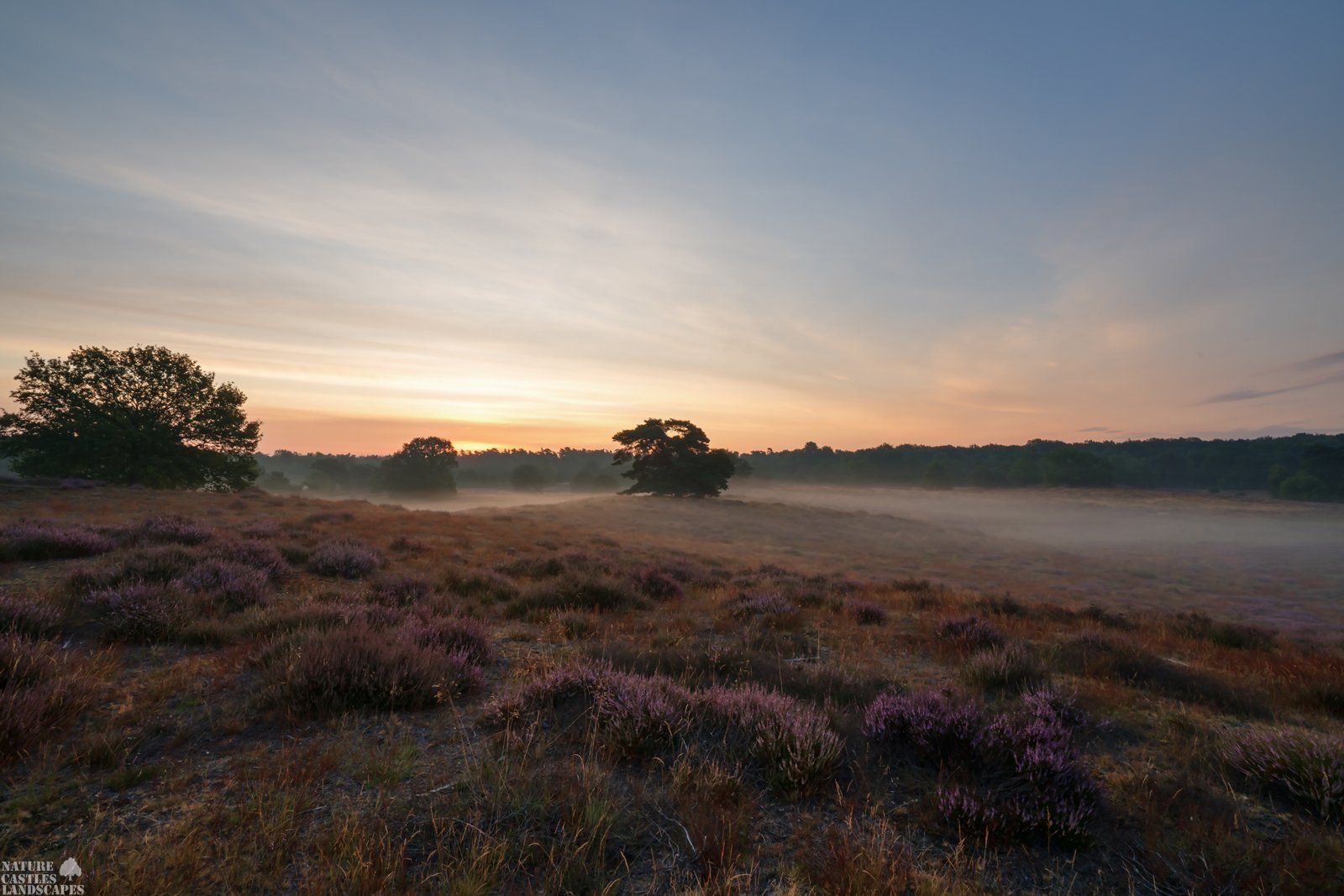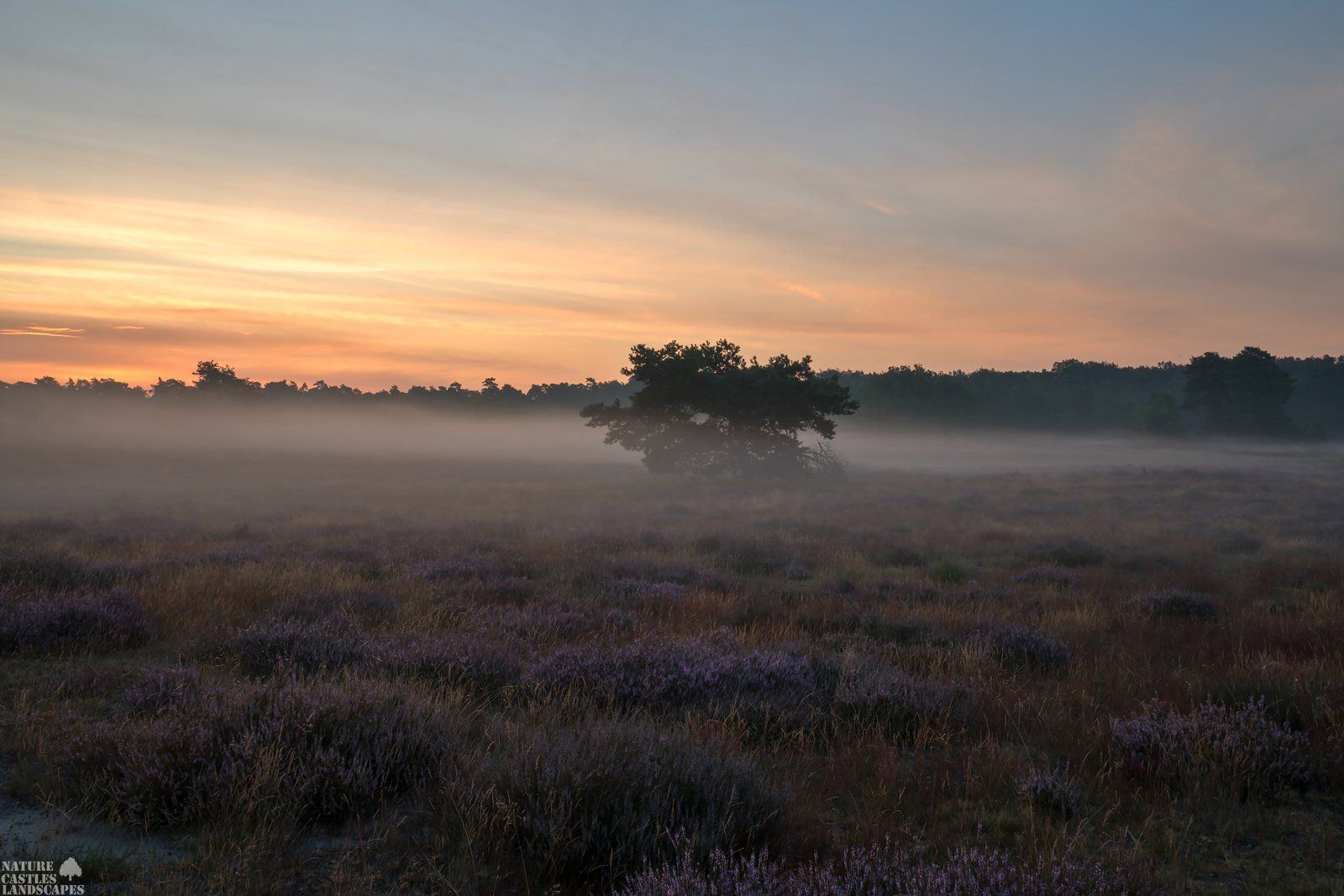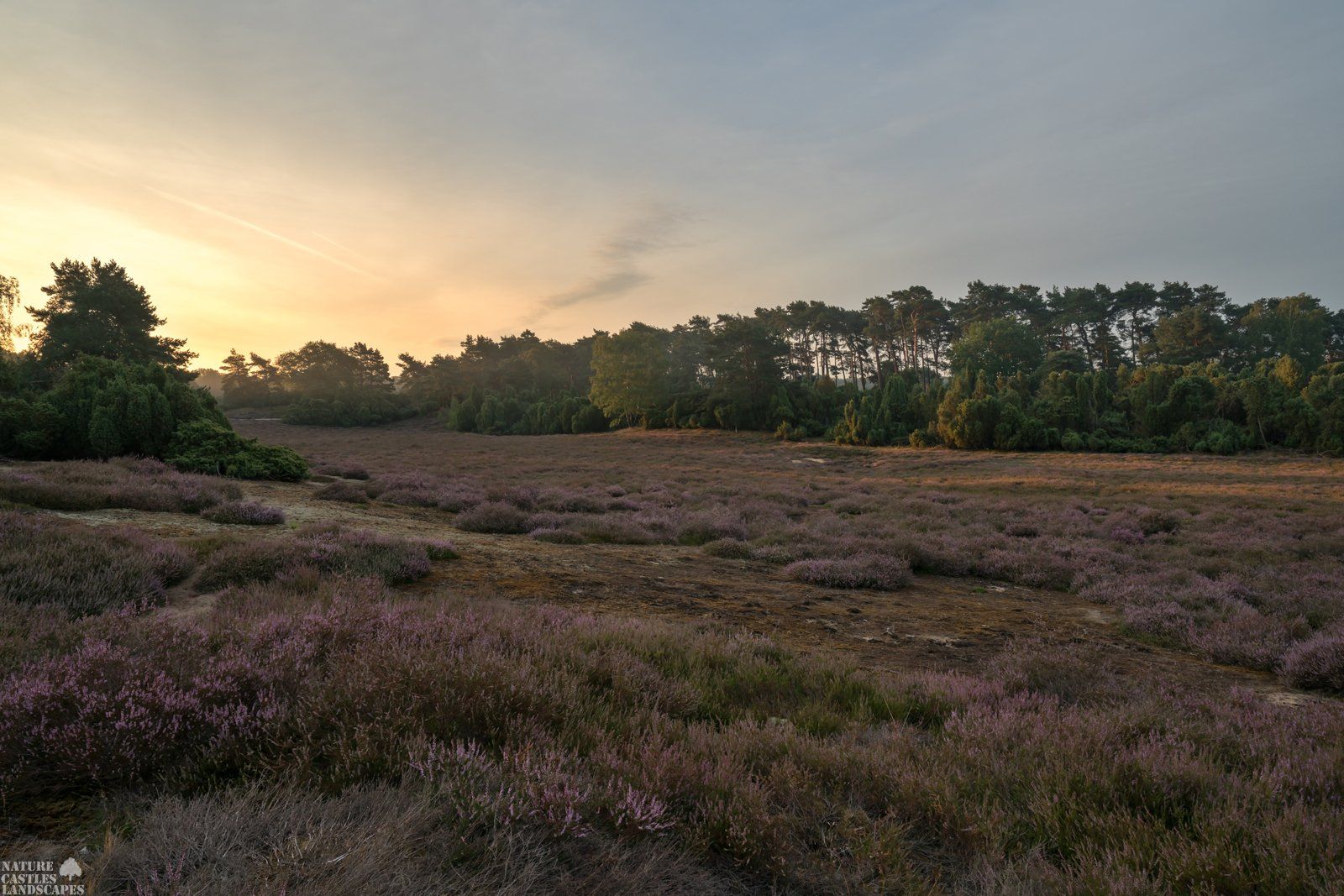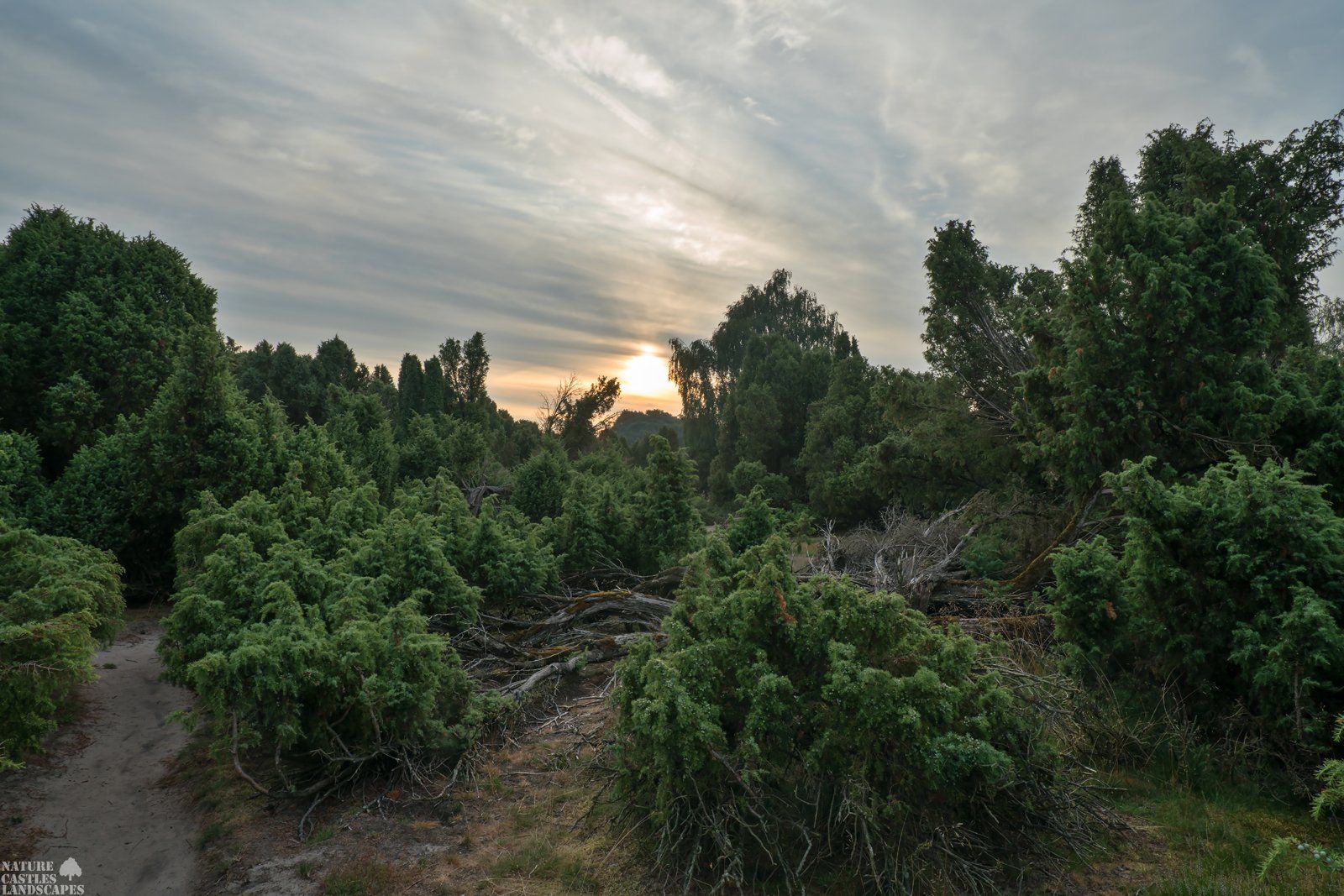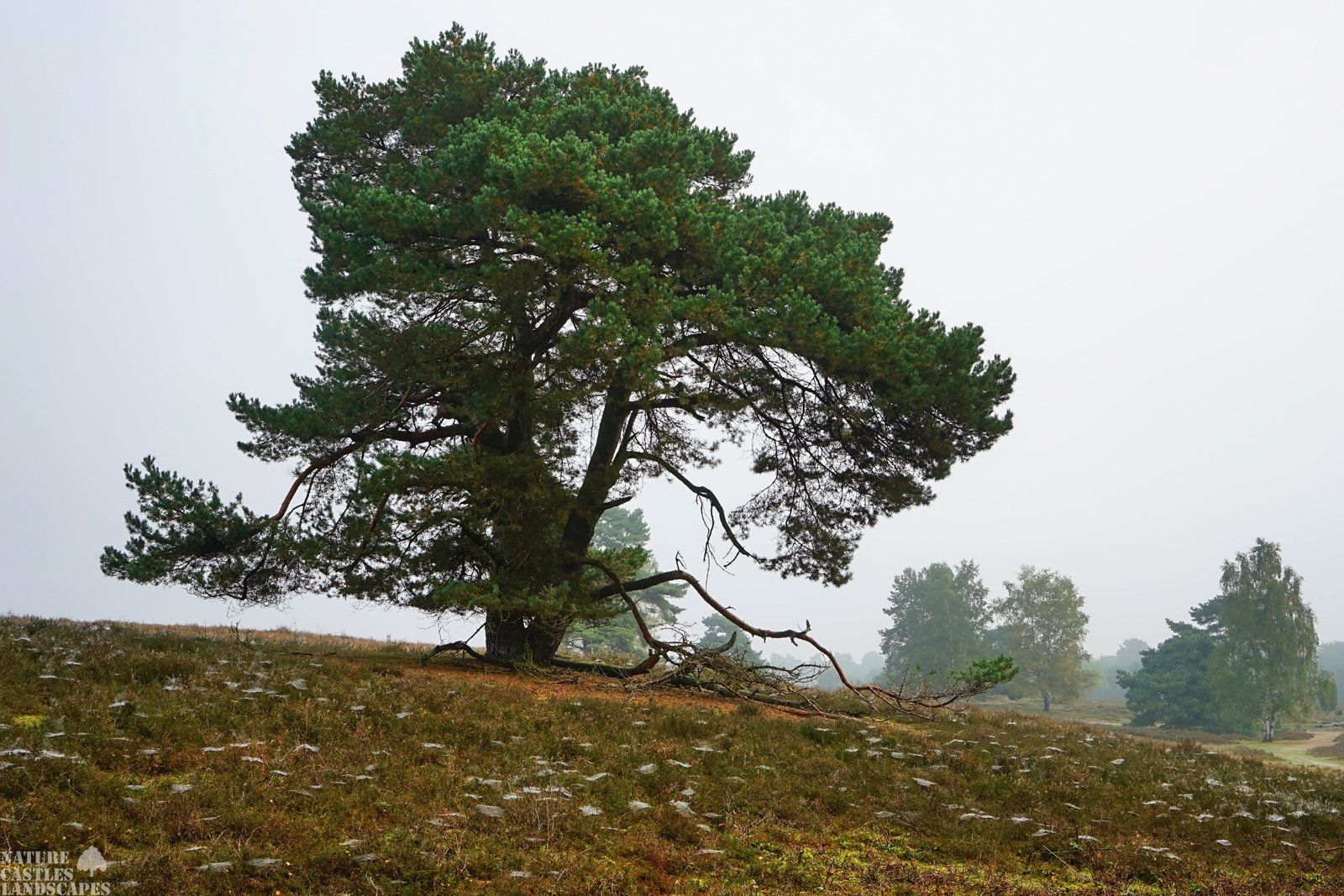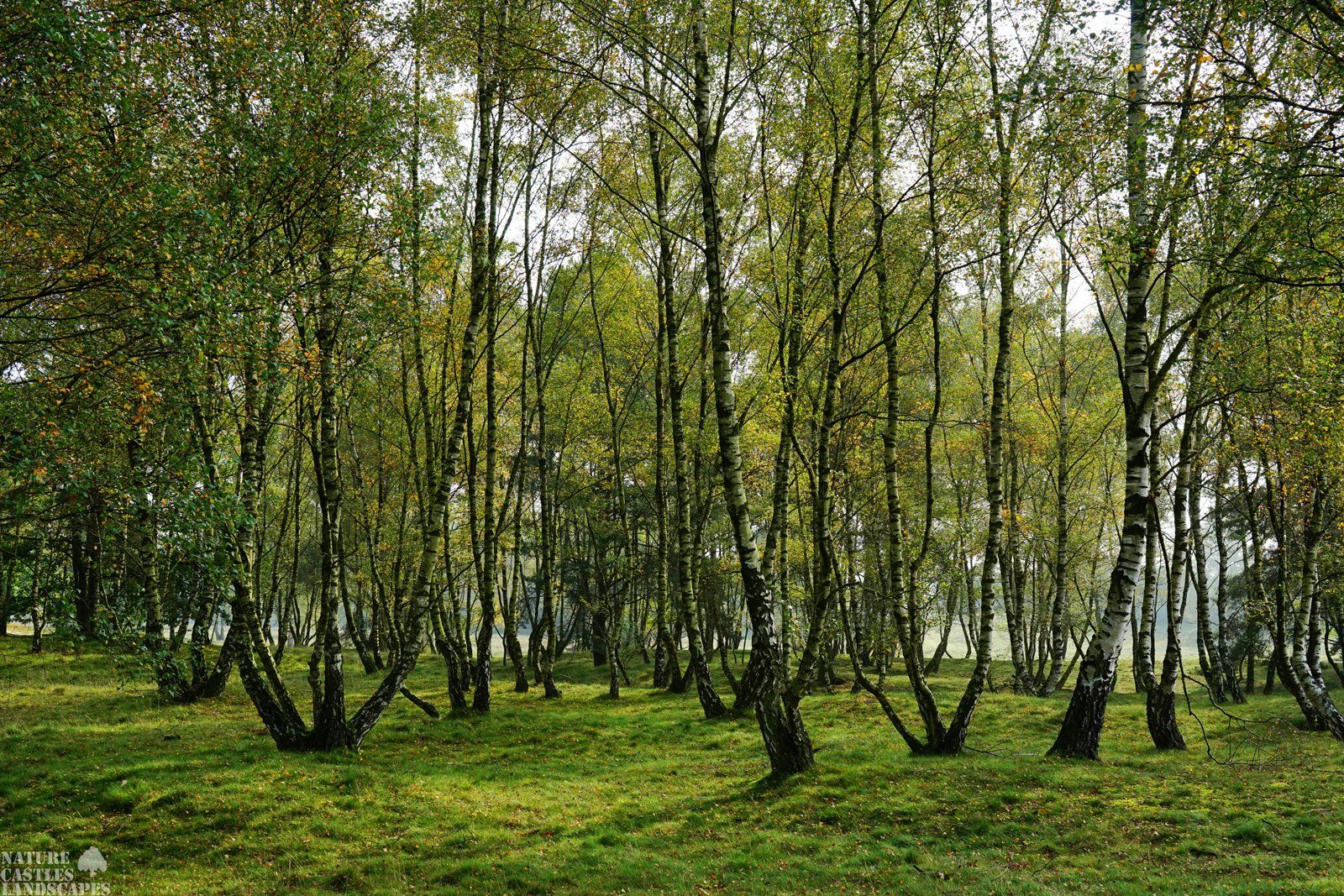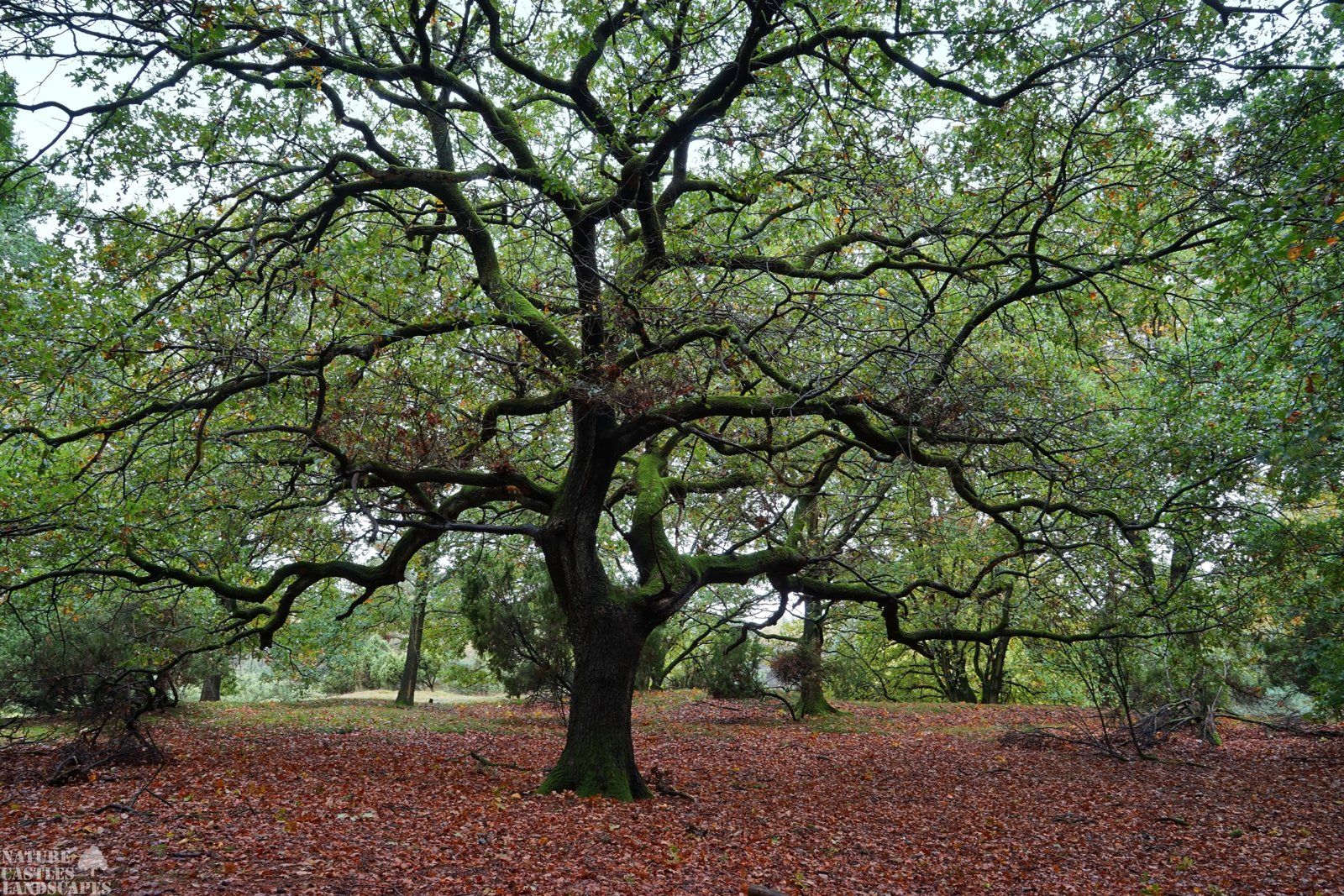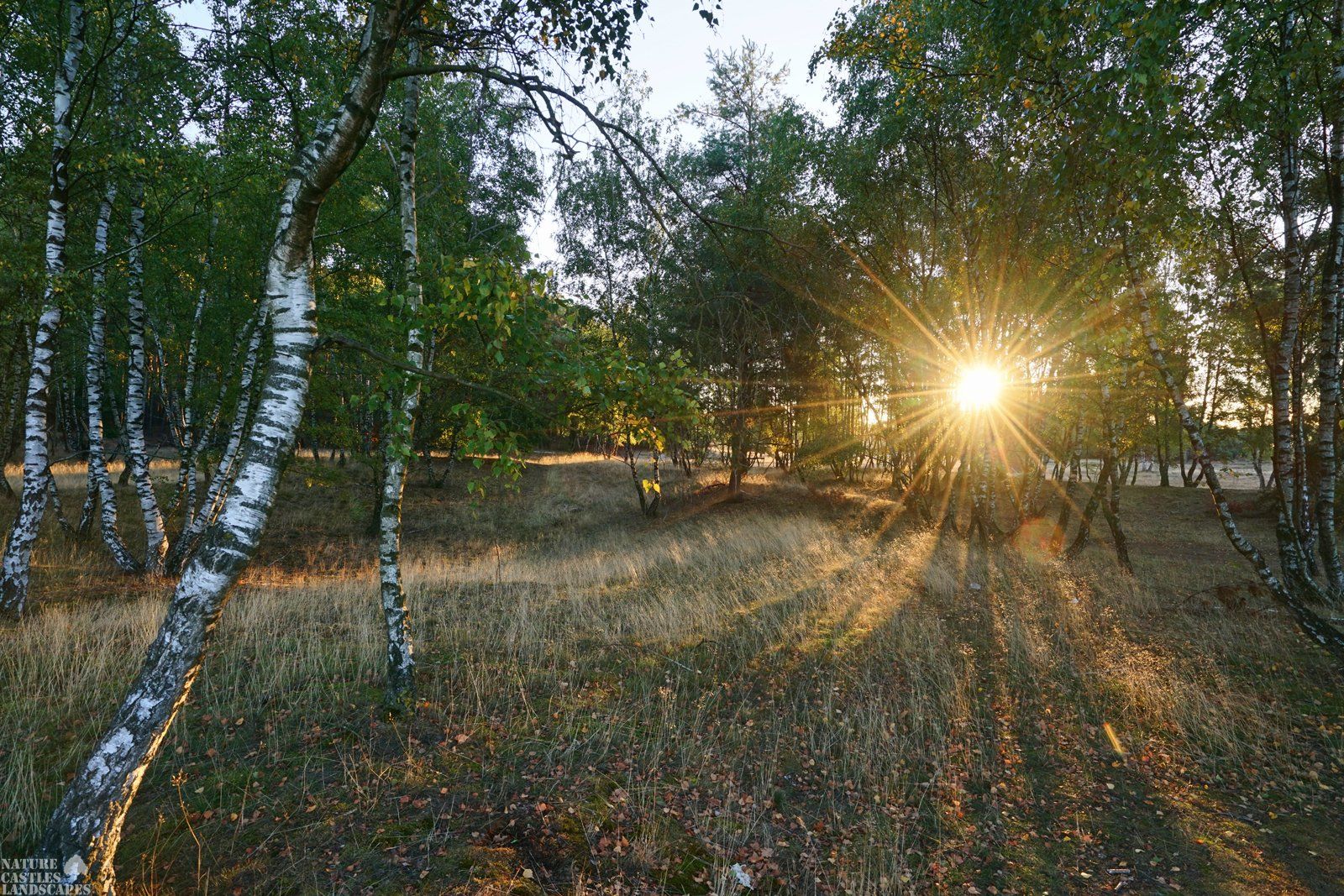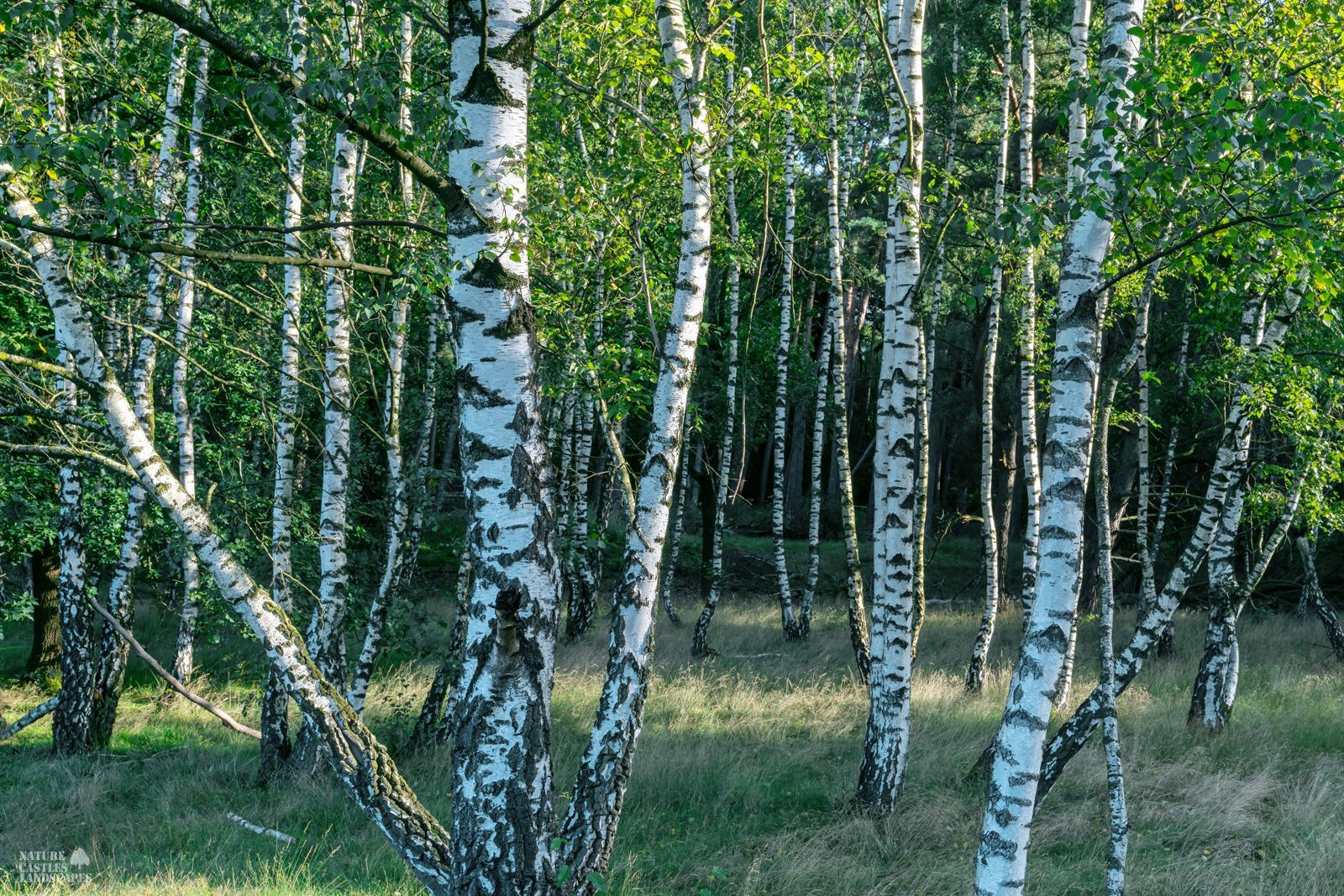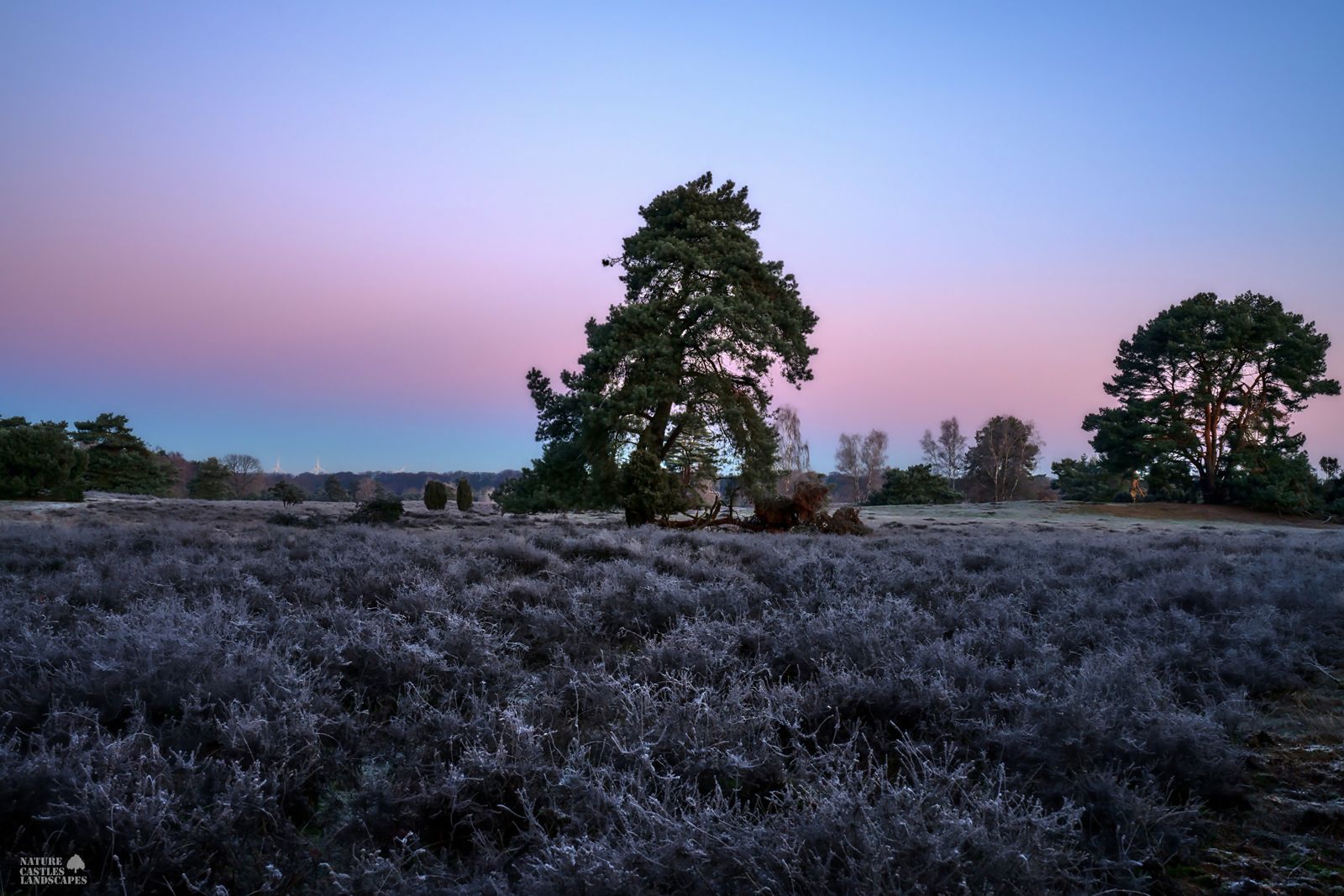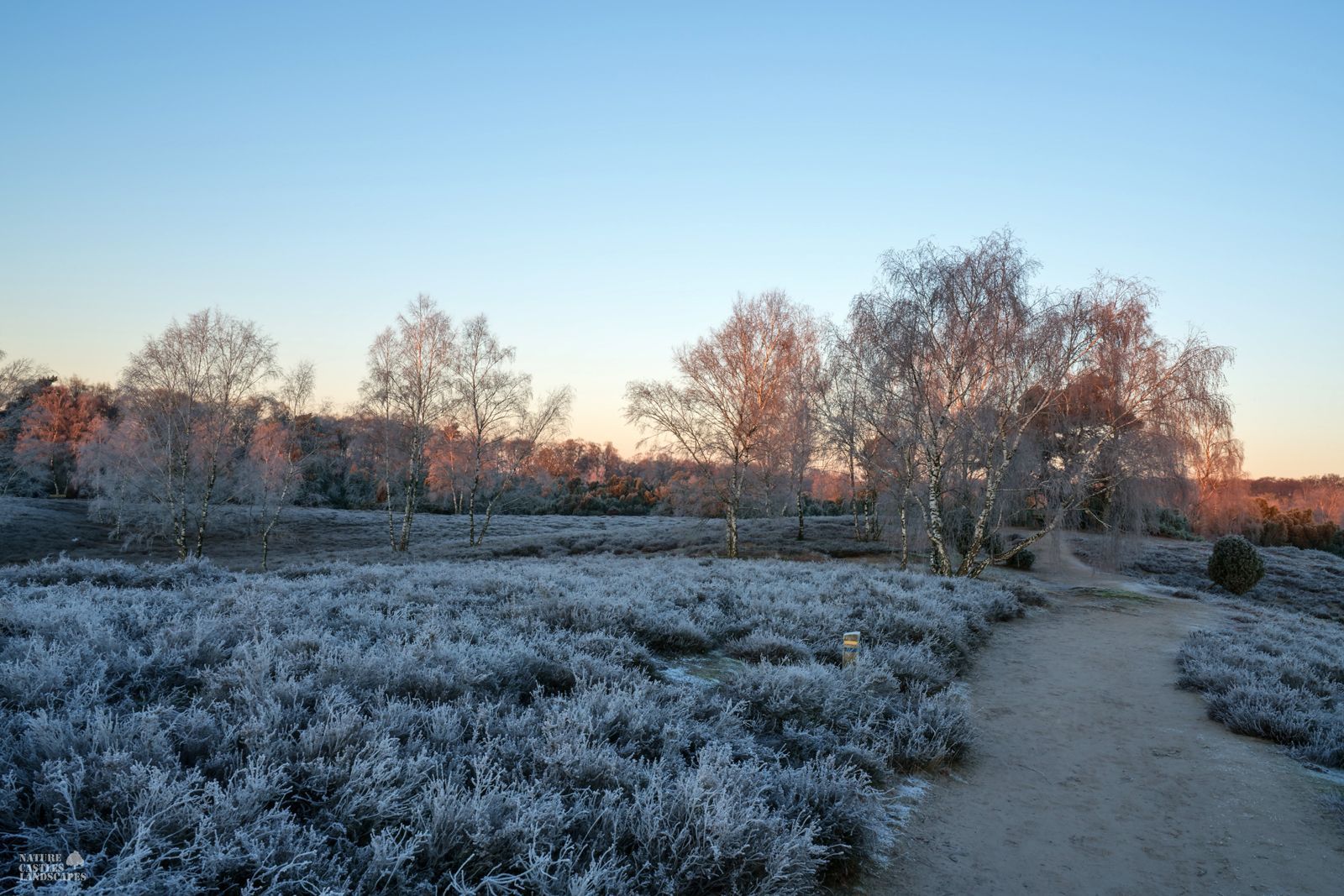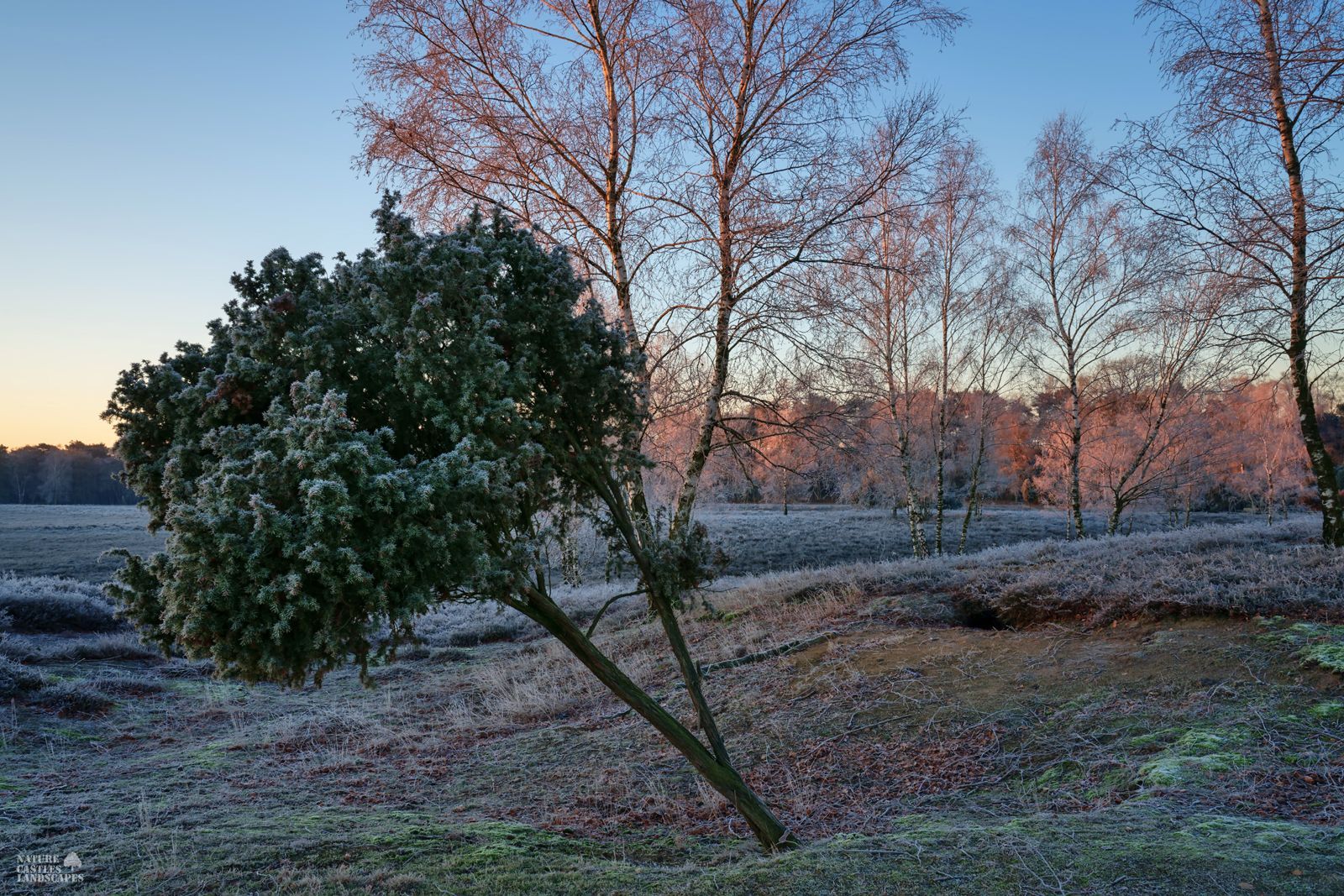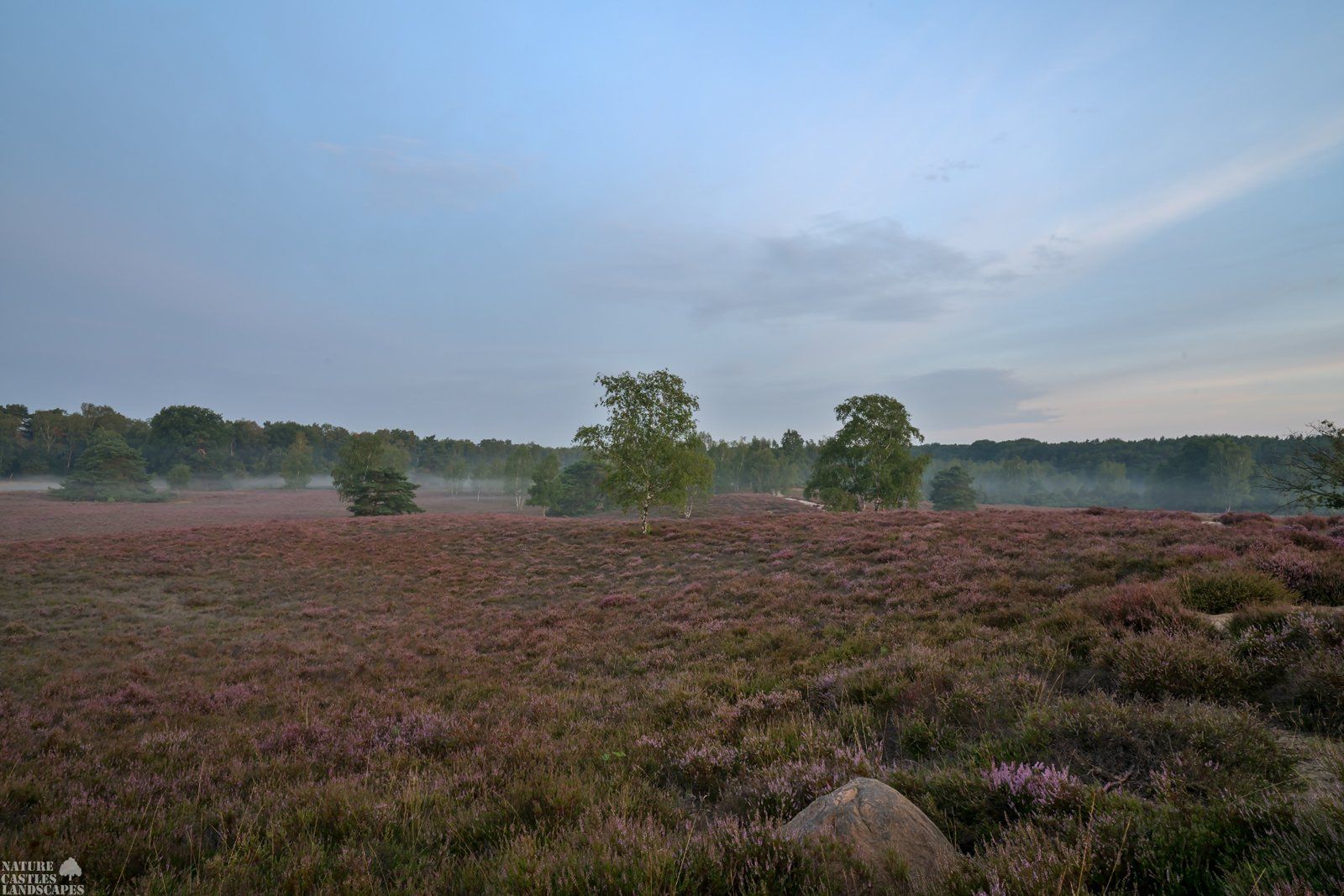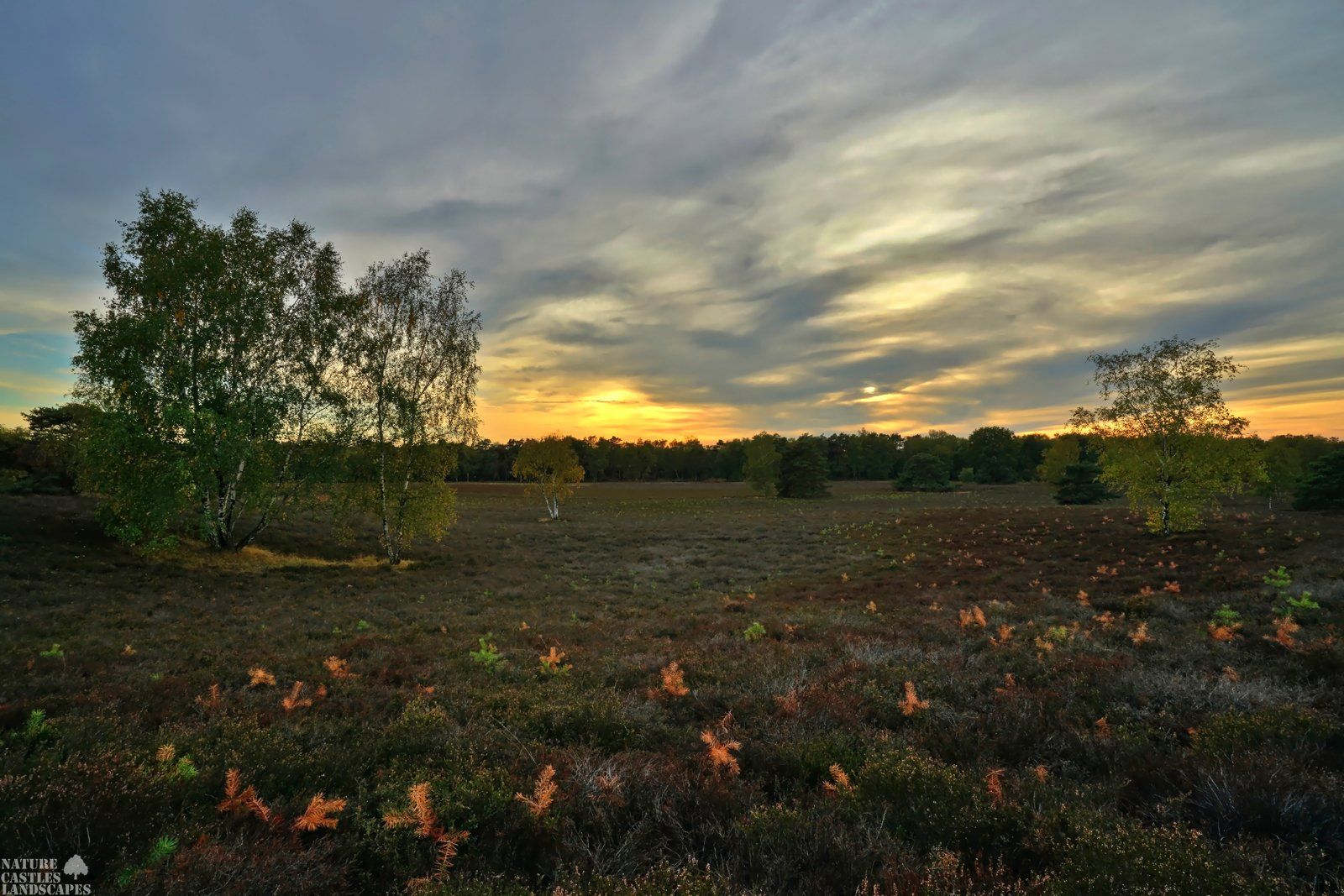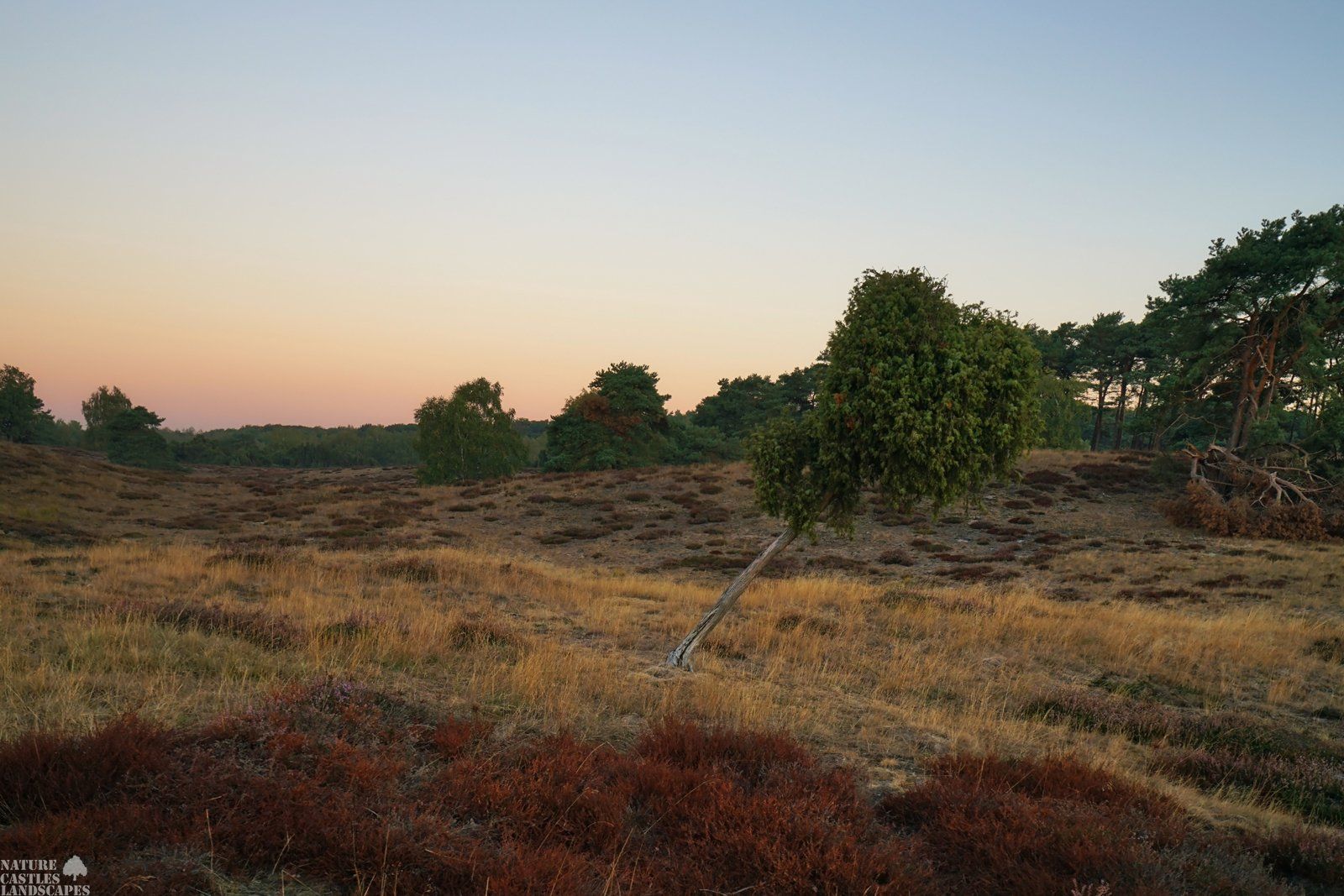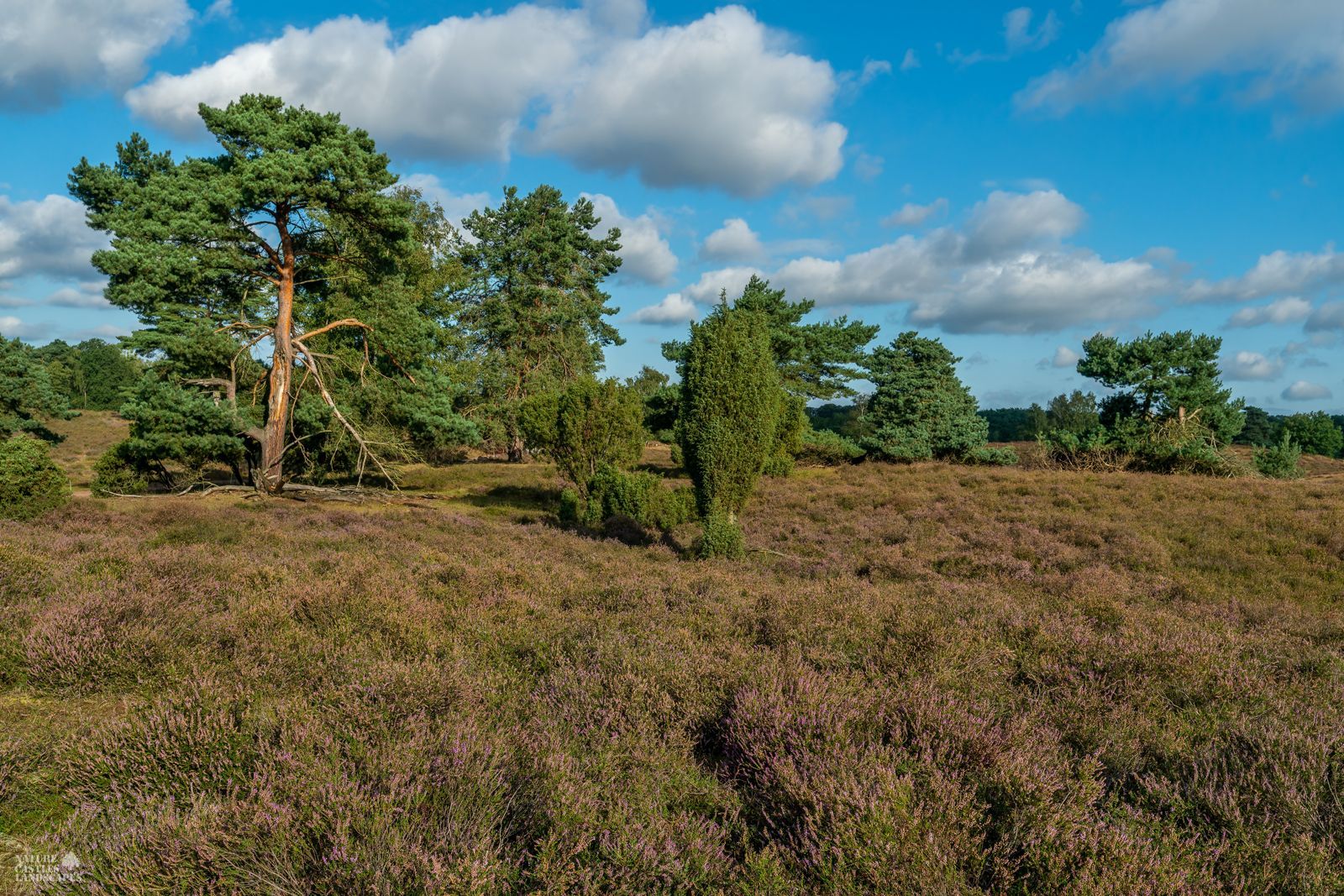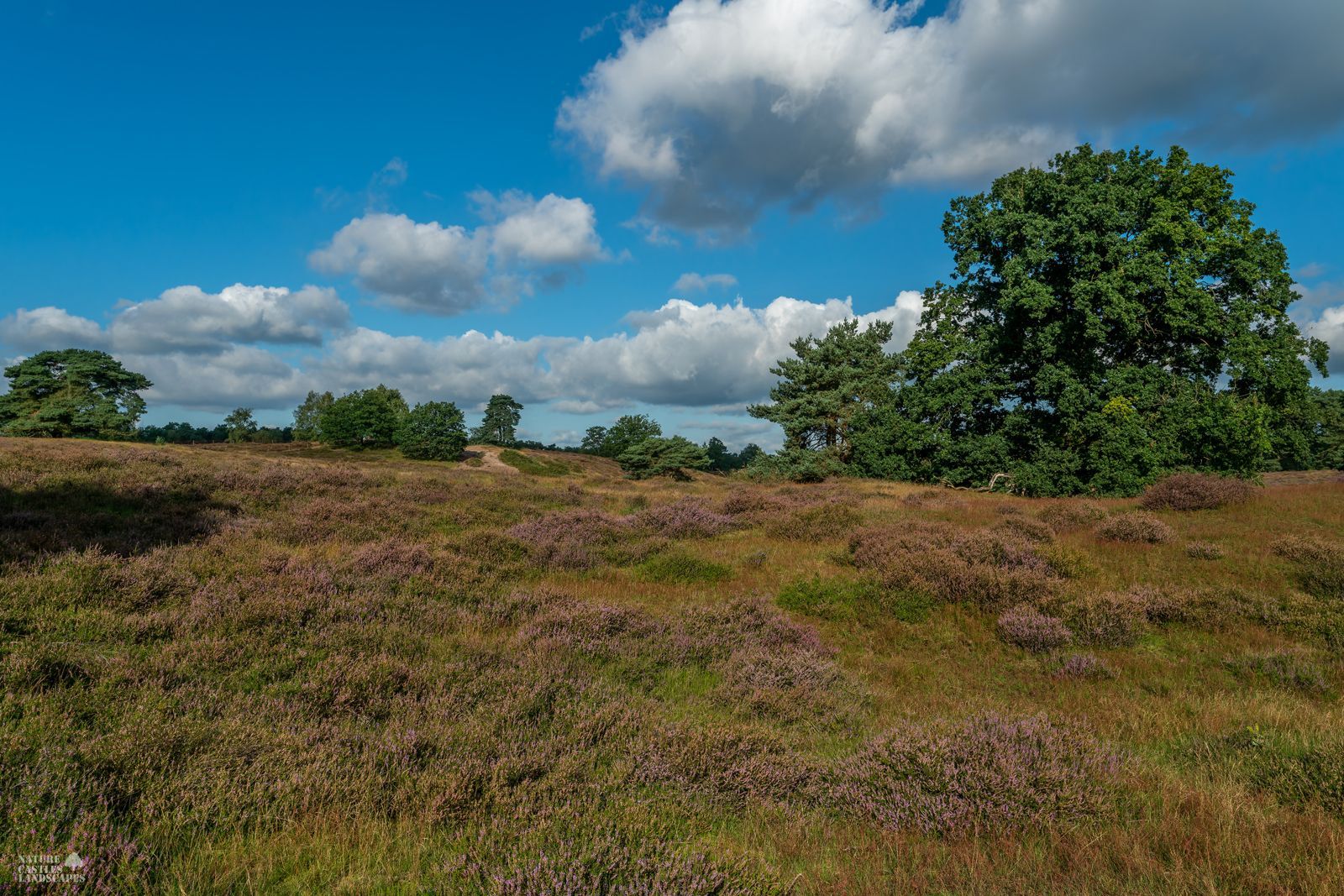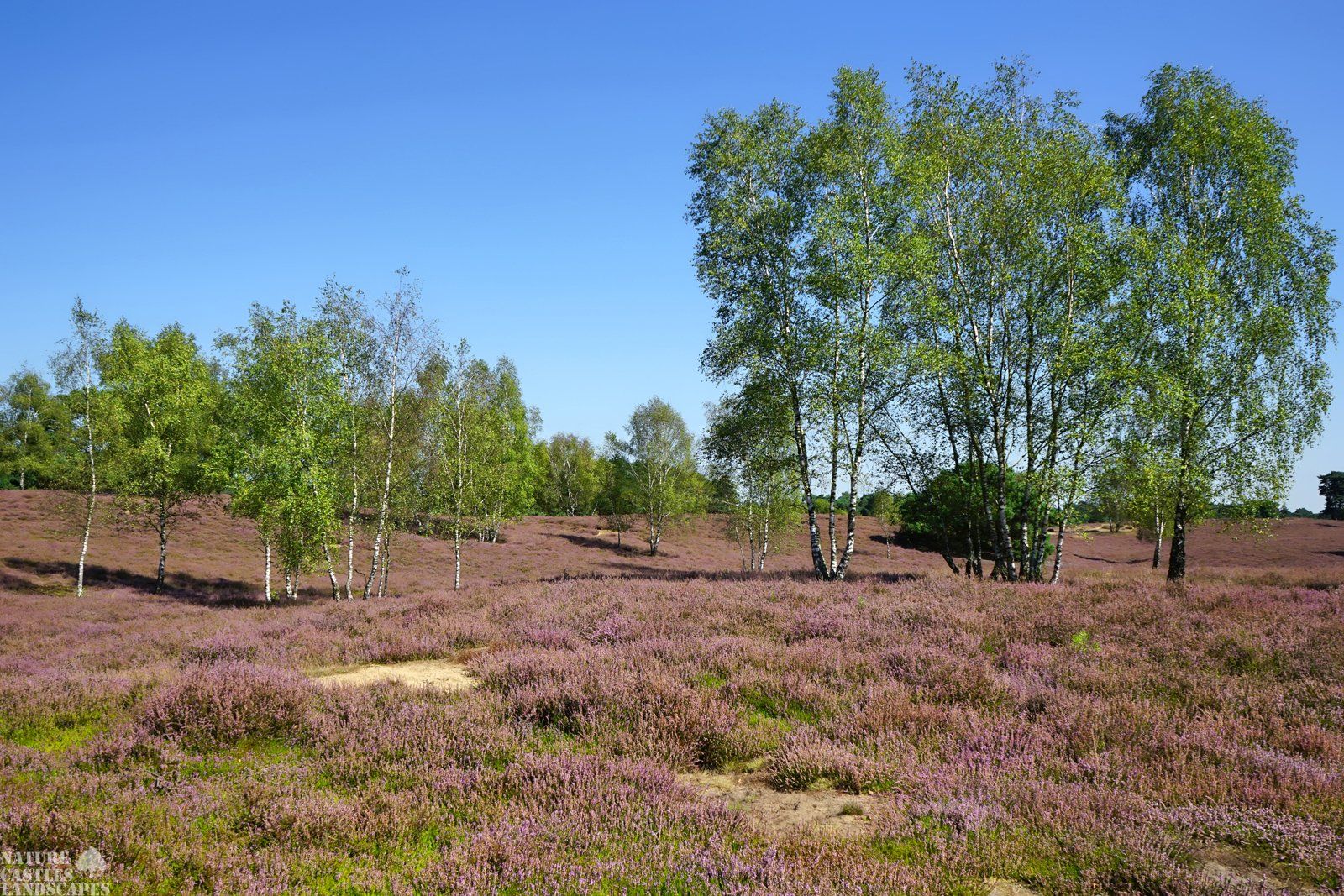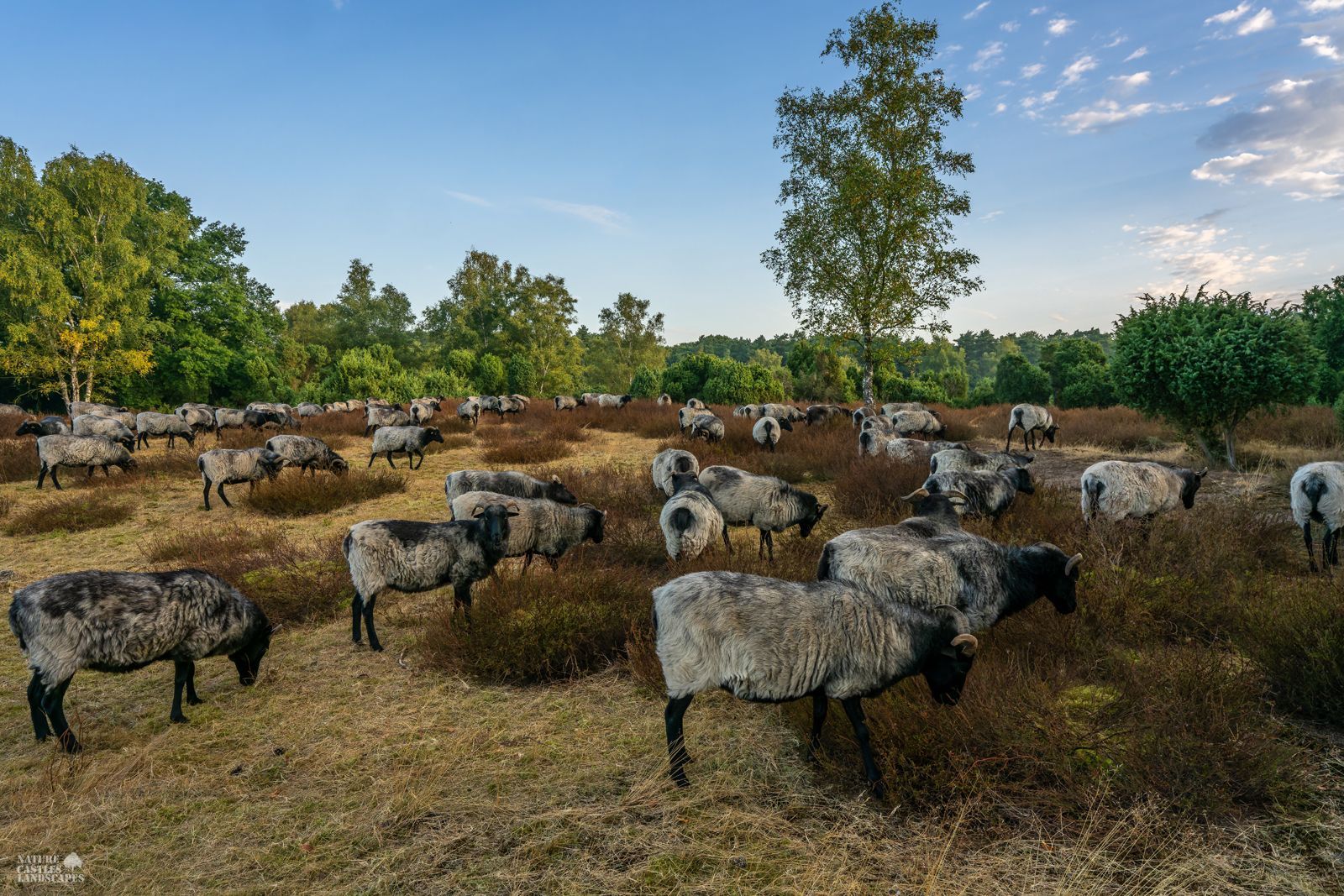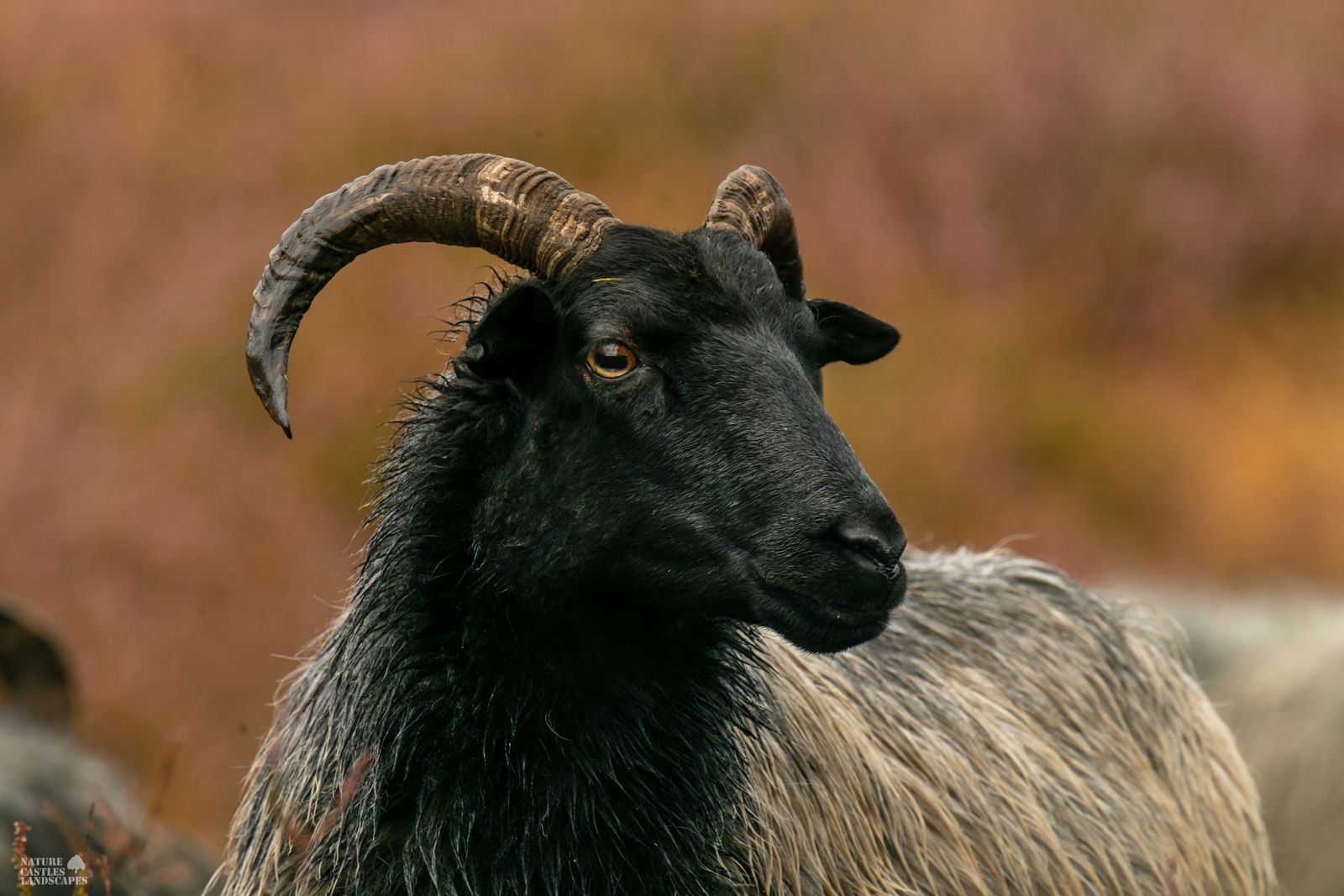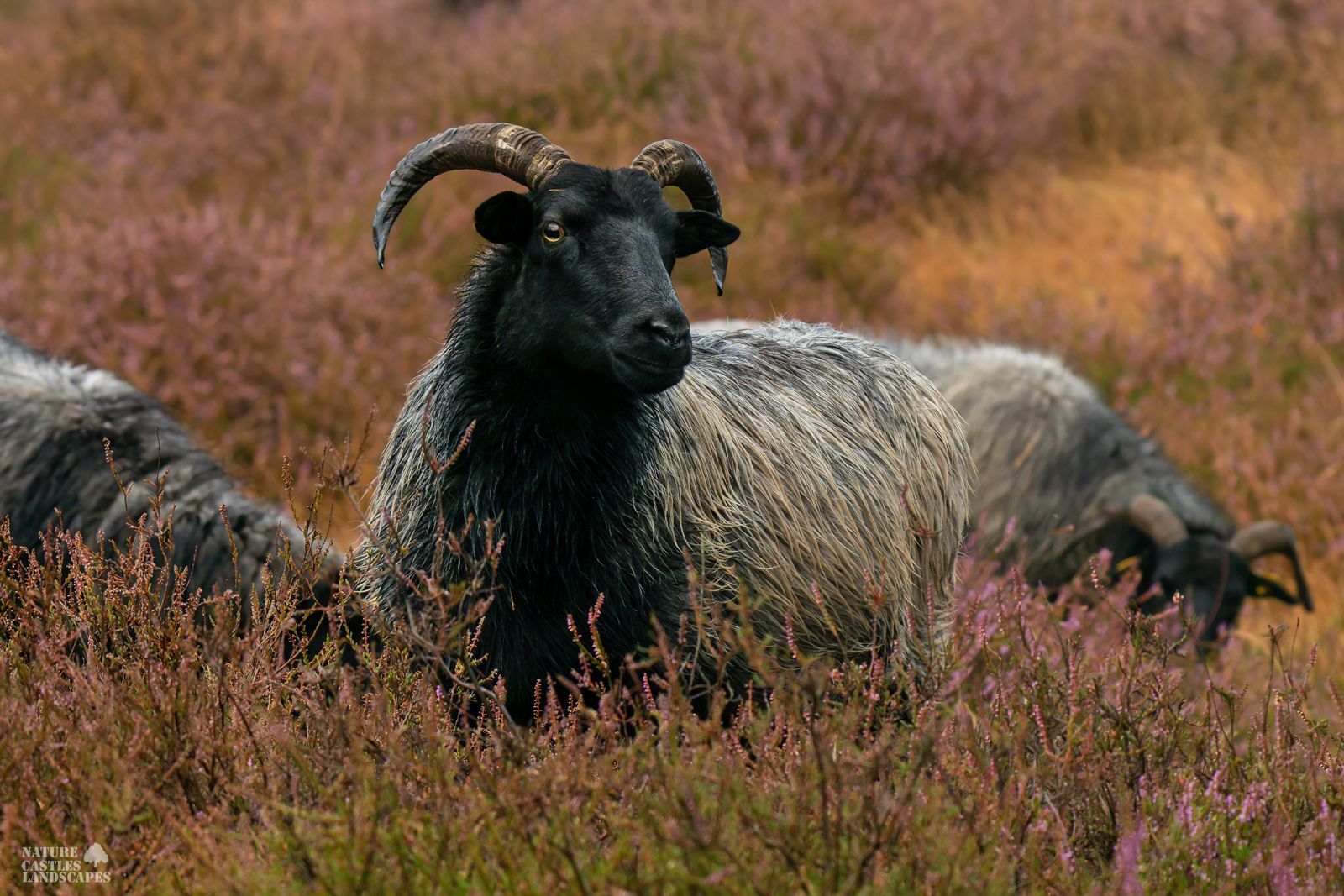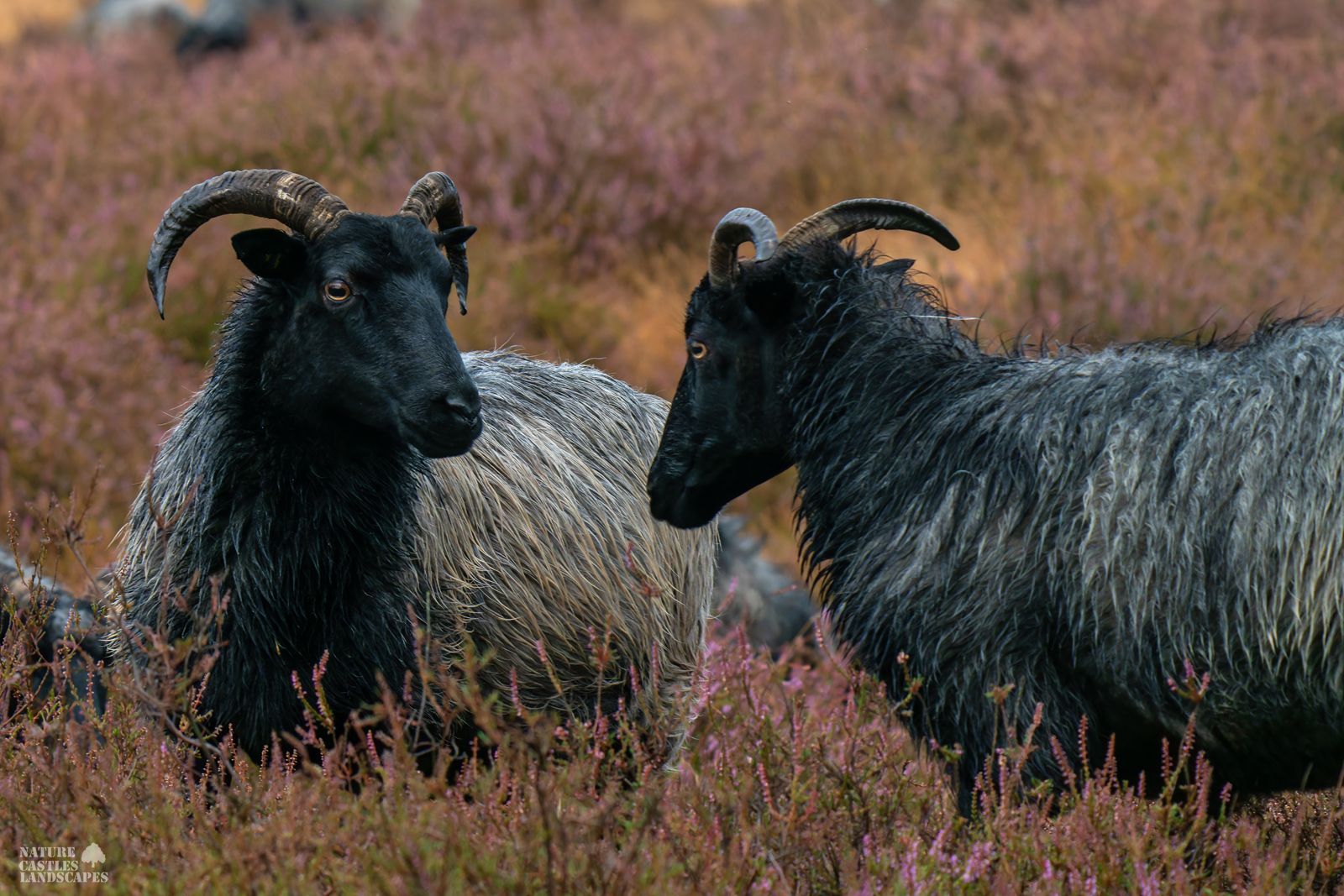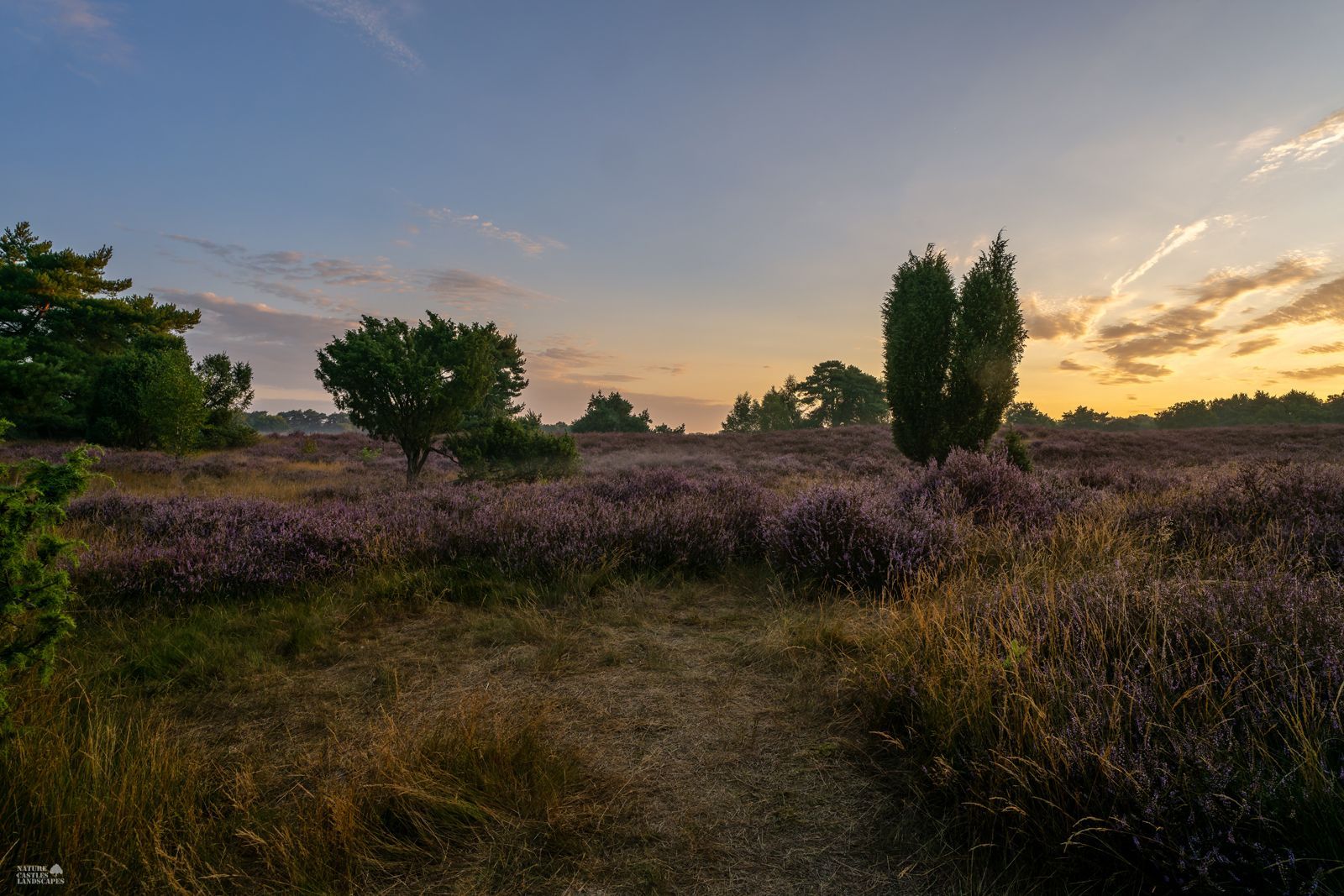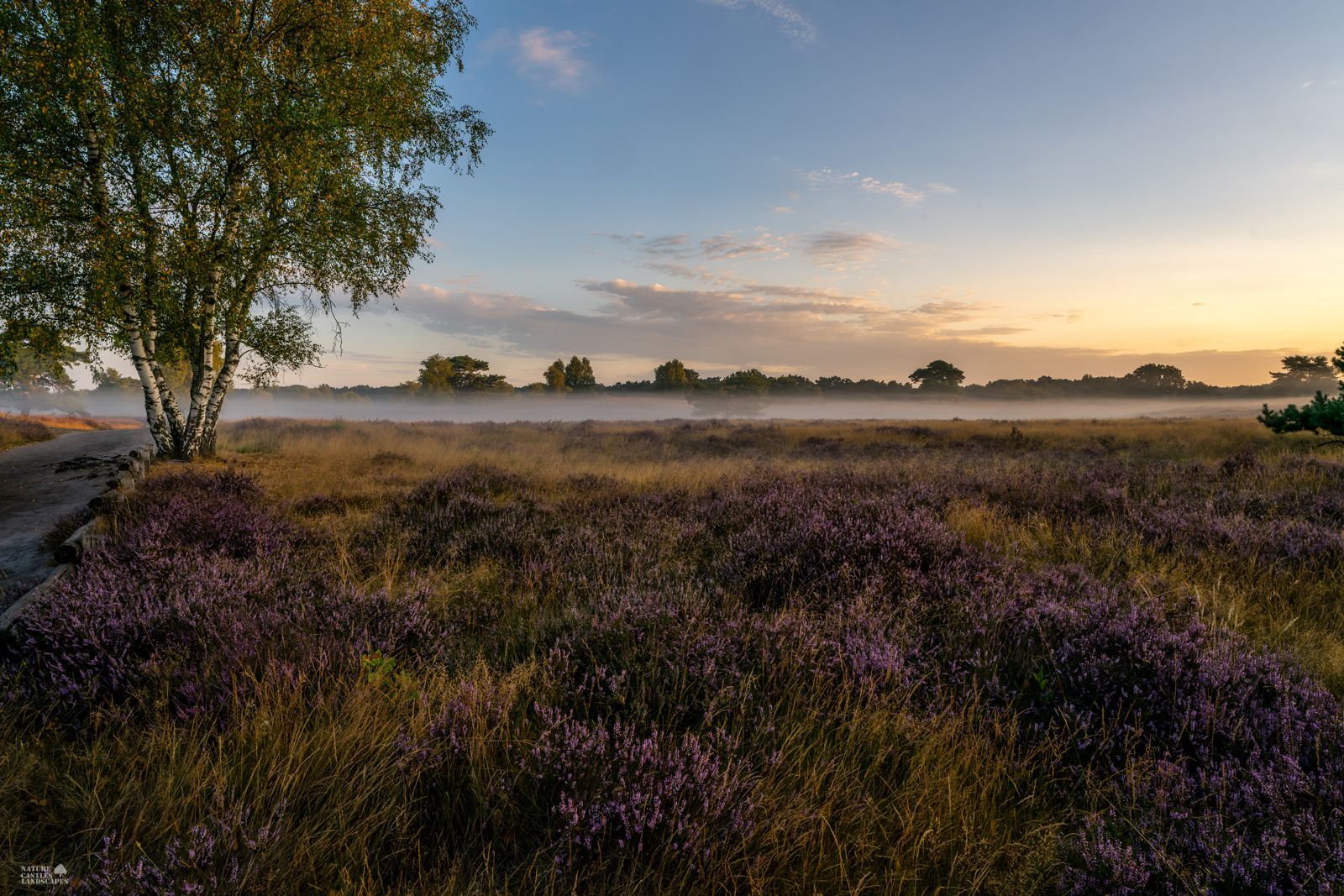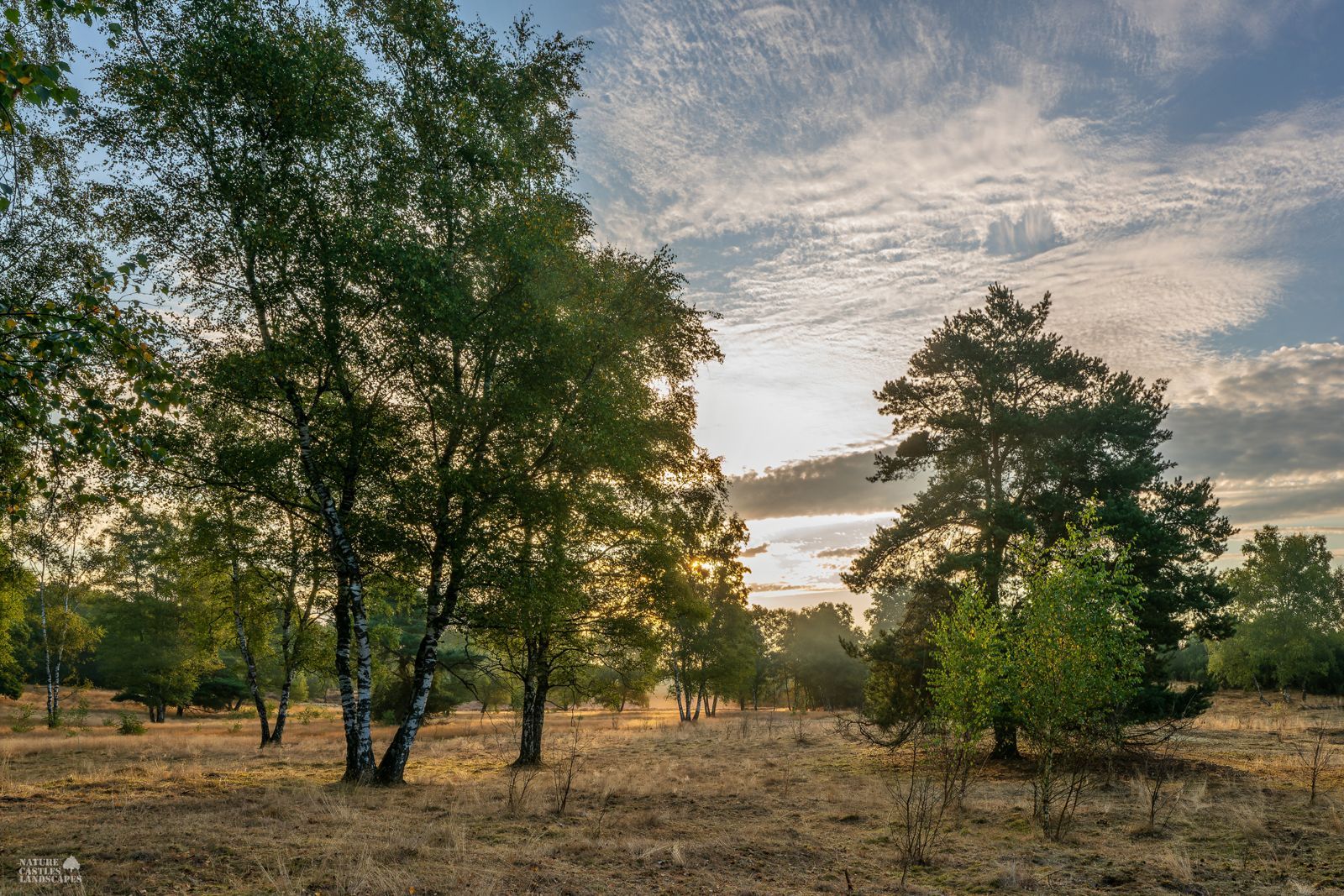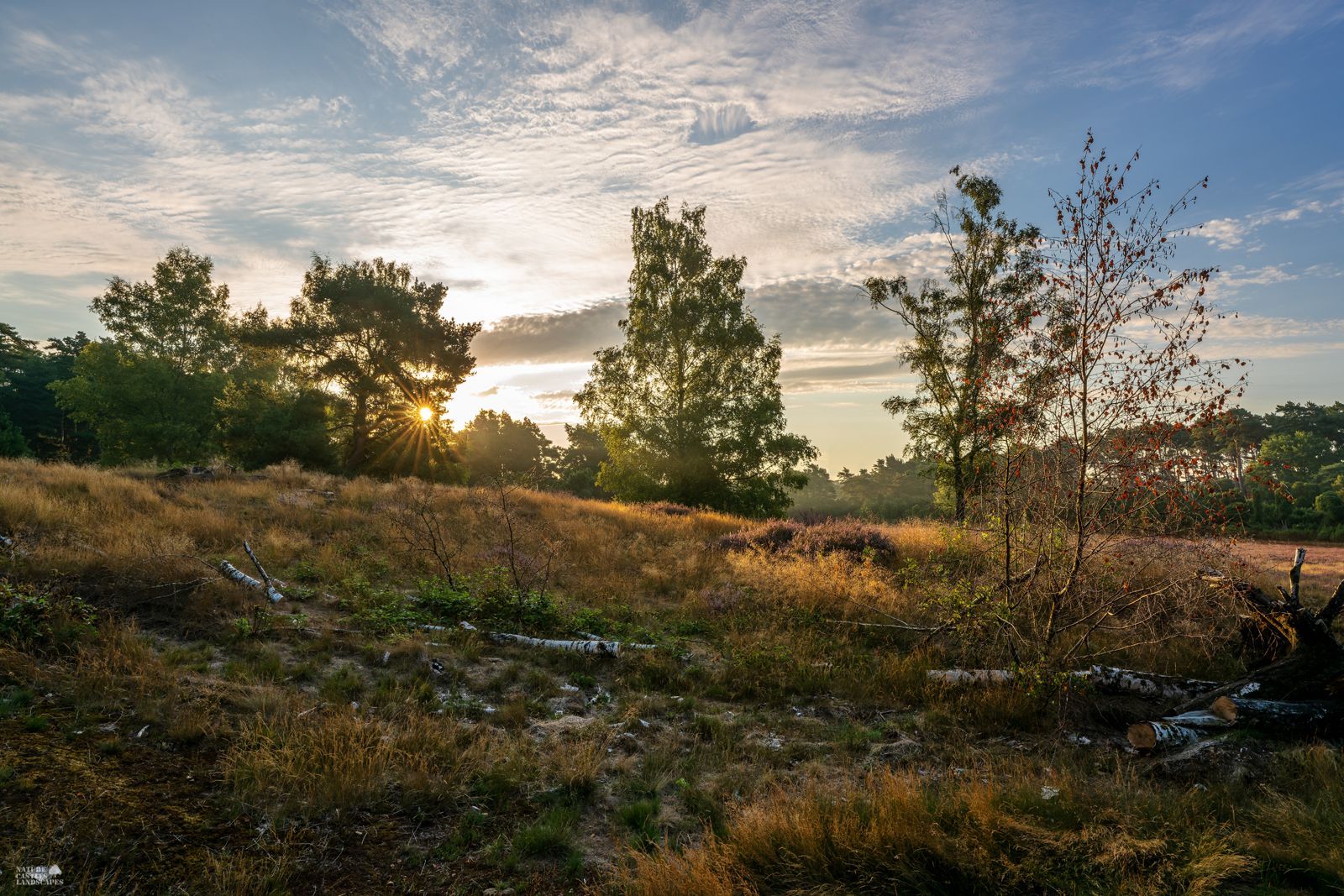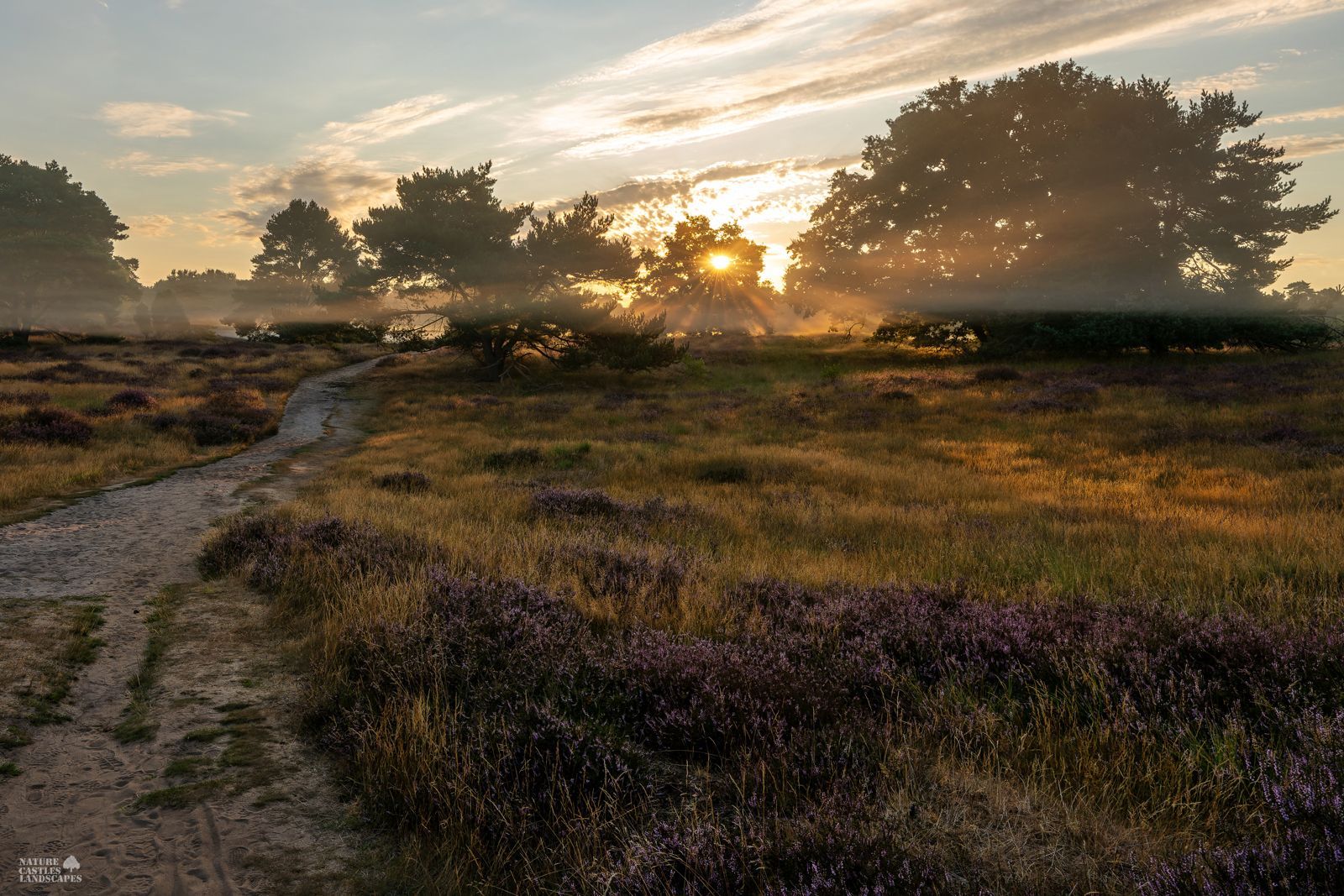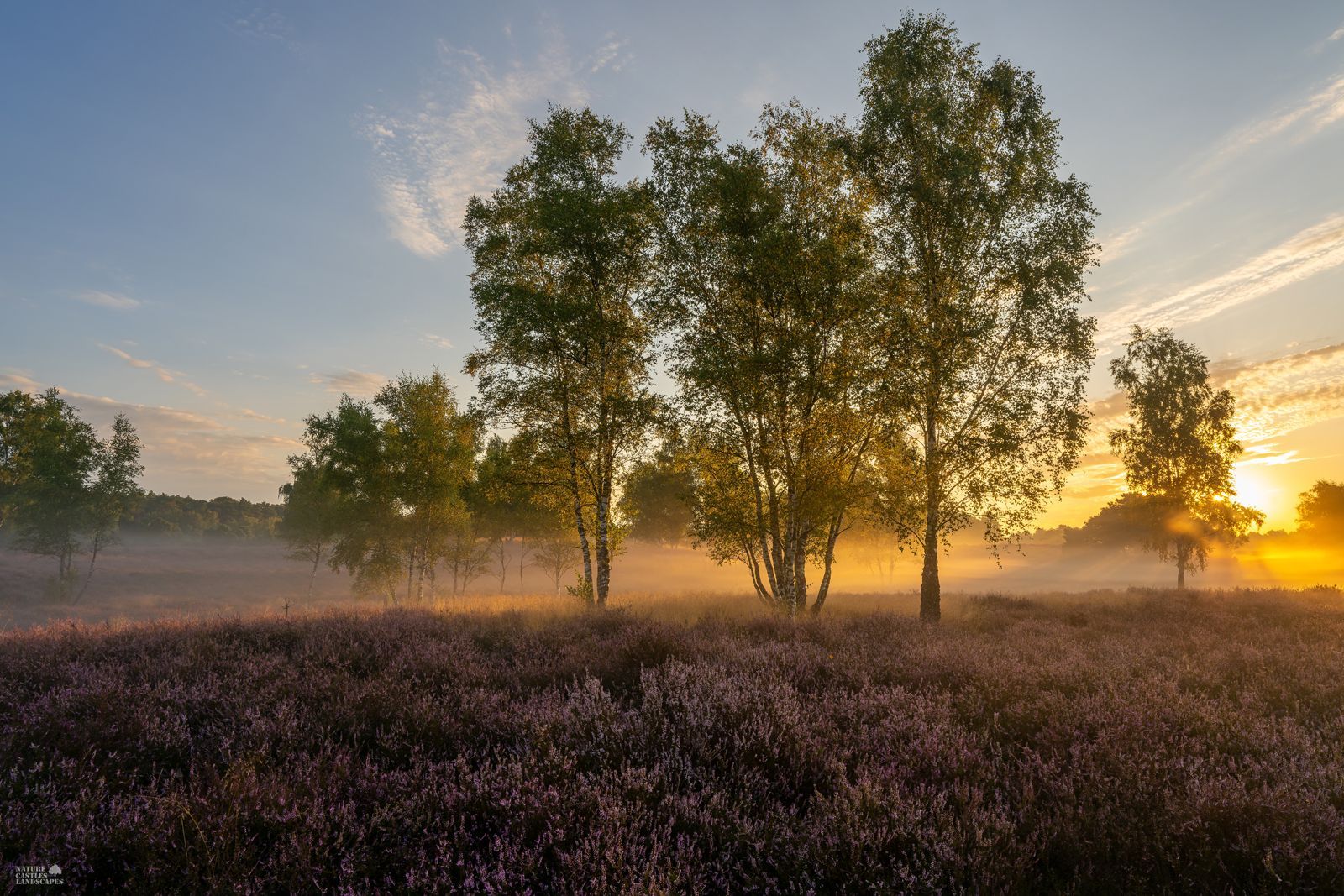WESTRUPER HEIDE - WESTRUPER HEATHLAND
Located just outside the Haltern Water Reservoir, the 90-hectare "Westruper Heide" is a impressive heathland. The remaining area of the sand heaths, which used to dominate the Haltern region, lies on a post-glacial dune landscape. Heavy agricultural use since the Middle Ages pushed the original mixed forest back through firewood and cattle grazing and reduced the humus layer by plagiarism. The soil was only overgrown by frugal plants such as broom heath or juniper. In the course of the industrialization of the nearby Ruhr area, this heath landscape receded when pines were planted extensively for the Ruhr mining industry. The trunks were much sought after as pitwood.
In 1936, around 63 hectares of them were nature protected in order to preserve the once extensive heathland for future generations and continue to make it experienceable. Since 1993, 200 Heidschnucken and 10 goats have been grazing for five months of the year. In addition, in January or February, the old areas are processed by deliberate burning. The resulting ash acts as a fertilizer and rejuvenates the heath. In addition to the up to eight meter high juniper bushes, there are some solitary trees. In addition to the broom heath, the English broom and the bell-heath, as well as various lichens and mosses, are growing. In particular heat-loving insects and birds as well as reptiles populate the heathland.
In 1936, around 63 hectares of them were nature protected in order to preserve the once extensive heathland for future generations and continue to make it experienceable. Since 1993, 200 Heidschnucken and 10 goats have been grazing for five months of the year. In addition, in January or February, the old areas are processed by deliberate burning. The resulting ash acts as a fertilizer and rejuvenates the heath. In addition to the up to eight meter high juniper bushes, there are some solitary trees. In addition to the broom heath, the English broom and the bell-heath, as well as various lichens and mosses, are growing. In particular heat-loving insects and birds as well as reptiles populate the heathland.
The habitat mosaic of heathland provides numerous, now endangered plant and animal species a home. In the area there are the following, particularly sensitive landscape characteristics:
-Sand heaths inland dunes,-Sand dry grassland on inland dunes,
-rare and endangered juniper stands on dwarf shrub heaths
-nutrient-poor wetland ecosystems (Heideweiher).
Impressions of my walks
How the time flies! For over 50 years, I visit this heathland. As a small child, I let fly small model gliders from the dunes with my father. As a scout I have removed the birches from the heathland. And as an adult, I come here again and again several times a year. How nice that this gem still exists!
SUNRISE IN THE HEATHLAND
At the beginning of August 2019 at 6 a.m. I was finally lucky. Not only that the heather flowers were blooming and there was a dreamlike sunrise. As an encore, an early mist wafted over the landscape. These are the moments that deeply impress me.
TREES IN THE HEATHLAND
The remaining area of the sand heaths that used to predominate in the Haltern area is located on a post-Ice Age dune landscape. Heavy agricultural use since the Middle Ages pushed back the original mixed forest through the use of firewood and cattle grazing.
The pines were once planted here to supply the mines in the nearby Ruhr area with pit wood. In the meantime, the pine has lost its value as pit wood, but the trees have been left as a natural boundary. However, other renewable pine trees are removed by volunteers in order to curb the further spread of a pine forest.
There is also a small juniper forest here, since the paths are based on nature, the juniper bushes grow as they please.
At the westernmost point of the heath there is a forest full of thin-stemmed birches and between the tree trunks you have an idyllic view of the heath landscape.
The pines were once planted here to supply the mines in the nearby Ruhr area with pit wood. In the meantime, the pine has lost its value as pit wood, but the trees have been left as a natural boundary. However, other renewable pine trees are removed by volunteers in order to curb the further spread of a pine forest.
There is also a small juniper forest here, since the paths are based on nature, the juniper bushes grow as they please.
At the westernmost point of the heath there is a forest full of thin-stemmed birches and between the tree trunks you have an idyllic view of the heath landscape.
WINTERTIME IN THE HEATH
January 2019 was a beautiful, cold winter day in the Westruper Heide. I had my camera, tripod and a backpack with my breakfast on my back. it was just before sunrise when I got here. Time to have breakfast ... All these photos were taken on this wonderful morning in the heathland.
From Dusk to Dawn
Whether in the early morning or early evening, the Westruper Heath shows a special play of colors and it is usually still deserted. During the different seasons, the heath landscape shows a special play of colors. I love these moments...
TREES IN THE FOG
IIn the early New Year's morning I always hike in the Westruper heath. Sometimes it is sunny, sometimes there is snow and ice in the heathland. This time it was foggy all morning and I was able to capture the contours of the rustic trees with my camera. you can see the results here!
SNAPSHOOTS
No matter what time of year. No matter what time of day. Whether the sun is shining or dark rain clouds are piling up in the sky. There is always the right clothing for a hike through the Westruper Heide. You can view the results here. I hope you like these pictuers!
SHEEPS AS USEFUL HELPERS
Since 1993 there has been a herd of Heidschnucken again in the Westruper Heide. 178 Heidschnucken and 8 goats, sometimes more, sometimes less, are the actual "gardeners" of the heath. I have also often seen a herd of White Polled Heath in the heathland. They nibble on the meager herbs and do not disdain birch shoots or juniper berries. It takes about six weeks for the herd to graze the entire area for the first time in spring. After that it goes faster, depending on how strong the subsequent vegetation is.
A WONDERFUL AUGUST MORNING
On an early morning in August 2025, I was lucky enough to encounter a mist over the heathland. Combined with the rising sun, this created a wonderful play of colors. I was also fortunate that the heather was still in bloom, allowing me to take some unique photos. These natural wonders never fail to enchant me.

